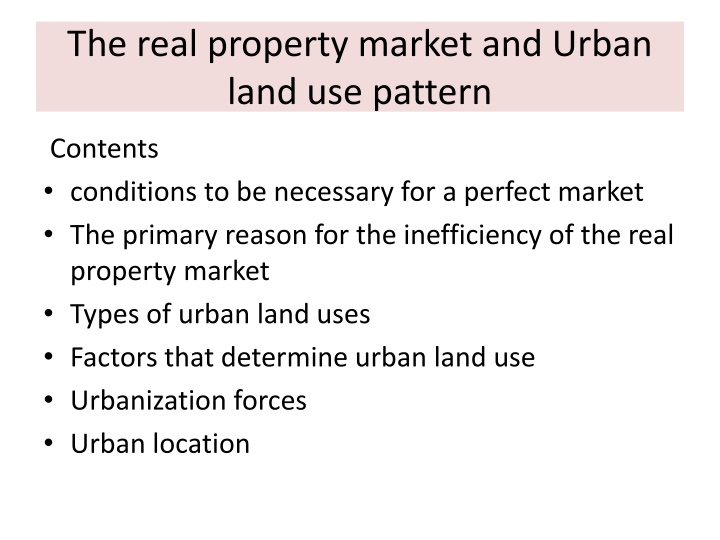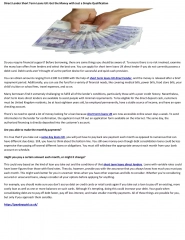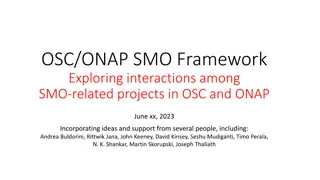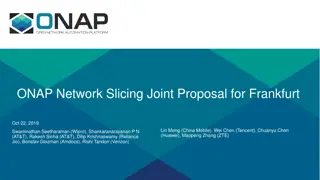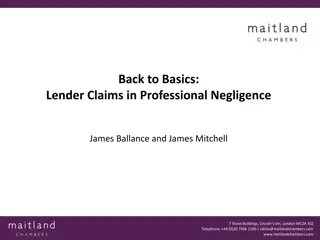ONAP Electronic Document Delivery Lender Webinar Overview
The ONAP Electronic Document Delivery (EDD) Lender Webinar held on June 29, 2020, introduced participants to the web-based portal connecting DG Lenders/Servicers and ONAP with loan application documents. The agenda covered accessing ONAP EDD, setting up passwords, conducting demos on logging in, submitting, viewing, and withdrawing documents. Steps for requesting access and setting up passwords were detailed along with important notes on whitelisting the application URL and browser recommendations. The webinar also addressed session timeouts and document upload/download times for seamless usage. A Q&A session provided clarifications and guidance to participants.
Download Presentation

Please find below an Image/Link to download the presentation.
The content on the website is provided AS IS for your information and personal use only. It may not be sold, licensed, or shared on other websites without obtaining consent from the author.If you encounter any issues during the download, it is possible that the publisher has removed the file from their server.
You are allowed to download the files provided on this website for personal or commercial use, subject to the condition that they are used lawfully. All files are the property of their respective owners.
The content on the website is provided AS IS for your information and personal use only. It may not be sold, licensed, or shared on other websites without obtaining consent from the author.
E N D
Presentation Transcript
The real property market and Urban land use pattern Contents conditions to be necessary for a perfect market The primary reason for the inefficiency of the real property market Types of urban land uses Factors that determine urban land use Urbanization forces Urban location
Why the real property market is imperfect and inefficient The conditions to be necessary for a perfect market are: Many buyers and sellers A homogeneous product Full information Free entry and exit However, the real estate market is imperfect and Inefficient due to its distinct characteristics
Cont The primary reason for the inefficiency of the real property market is the heterogeneity of the properties being sold. It is heterogeneous because it is fixed in location. Even identical, properties cannot be physically brought together and traded in a single market place. Identical properties will differ because their locations are different, and cannot be changed.
Cont A second reason for the high degree of heterogeneity is that the problem of location is compounded by the fact that the price of the characteristics of properties may vary with location. For example view, noise etc. If the prices of these characteristics vary from area to area and from location to location the problem that the market has to solve is made more difficult.
Cont The third reason is that all properties differ in some way, consisting of differing bundles of characteristics. In this the property market is totally different from most other markets, where identical goods may be traded on a daily basis by most market participants, both buyers and sellers.
Cont Most of these participants do not acquire information over time. It follows that the cost of acquiring information is high relative to the cost of transaction. Thus the property market is not efficient. Prices in one area will rise, or fall, relative to prices in another. Finally, some part of any change in relative prices results from Comparison between efficient and imperfect economic change.
Urban land use patterns Types of urban land use Urban land use comprises two elements: The nature of land use which relates to which activities are taking place the level of spatial accumulation, which indicates their intensity and concentration. Central areas have a high level of spatial accumulation and corresponding land uses, such as retail.
Cont Peripheral areas have lower levels of accumulation. Most economic, social or cultural activities imply a multitude of functions, such consumption and distribution. These functions take locations and are part of an activity system as production, place at specific
Cont Individuals, institutions and firms have an imprint on land use in terms of their locational choice. The representation impression requires a typology of land use, which can be formal or functional: of this
Cont Formal concerned with qualitative attributes of space such as its form, pattern and aspect and are descriptive in nature. Functional land use concerned with the economic nature of activities such as production, consumption, residence, and transport, and are mainly a socioeconomic description of space. land use representations are representations are
Cont Different types of urban land use: Commercial land use: Some urban areas are used for commercial activities, such as shops, offices and banks. Residential land use: Some urban areas are used for residential purposes, where buildings are built for people to live in. Transport land use: Some urban areas are used for transport facilities, such as roads, bus terminals and airport.
cont Institutional land use: Some urban areas are used for institutional services, such as offices, police stations, schools and libraries. Recreational land areas are used purposes, such as playgrounds, gardens and parks. Mixed land use: In some areas, there is more than one type of land use.. use: for Some recreational urban
Factors that determine urban land use Urban land use is determined by several decisions made by firms, households and government particularly government. In a dynamic economy, new firms emerge and have to choose where to locate. Finally, government authorities affect land use through development, overall transport policy, and the sitting comprehensive redevelopment. local the control of of roads, and
Cont General Accessibility : General accessibility, embraces the concept of transport cost including benefit of a particular location in terms of the movement costs it avoids and the revenue earning capacity it affords. Business firms need general accessibility to factors of production such as lobar and to markets while accessibility to work place, shops, schools and recreational facilities others, the households require
Cont Special Accessibility : Location decision may also be affected by special accessibility obtained from external economies of complementarity in accessibility. External concentration can take the form of a ready supply of trained labour (such as secretarial skill). concentration addition economies and to general of
Cont Cost and availability of finance: High interest rates will reduce the amount of borrowings that purchasers can afford, thus depressing the demand for urban land Demographic features of the population : The size of the population (in relation to a given area of land), age distribution, rate of household formation, rate of natural increase, immigration and emigration, geographical distribution, internal migration, etc., will have an effect on the demand and urban land use.
Cont Physical characteristics of the site size, gradient, sub-soil, vegetation, prevailing winds, views, etc. Proximity to amenities Schools, shops, parks, sporting facilities, transport facilities, etc. Proximity to employment opportunities
Cont Rental opportunities - A thriving rental market might raise the value of land Multiple occupancy - if planning laws permit higher density housing, then the land value may increase Inflation and the expectation of inflation - the expectation of future inflation (or capital growth) will make people willing to pay higher prices Government grants
Cont Re-zoning or the prospect of re-zoning - Huge increases in land values often occur when land is re-zoned from a lower to a higher use, eg. from farming to residential or from residential to industrial. The expectation of a future re- zoning will promote an upward trend in land values, accelerating as the actual re-zoning approaches
Cont Zoning restrictions - the value of land will tend to rise if the amount of land zoned for a particular purpose in a particular area is less than the amount required for that purpose in that area. The state of the economy - land prices, like the prices of other commodities will be affected by the general state of the economy, eg. by the affluence of the population, employment (and unemployment), and wealth and income factors.
Cont Neighborhood effects Surrounding developments etc. can affect the value of a property. construction of a busy road, an airport or a factory could reduce land values. Conversely, the construction of a bridge, development of a recreational park, or the closure of a street to through traffic could For example, the raise land values.
Cont Speculation - On the one hand it is argued that speculators, by withholding land from the market or by only allowing it to 'trickle through' in small quantities, force land prices up and expolit the end users of land. On the other hand, it is argued that speculators perform a useful role in the urban land market: they assist in the operation of the price mechanism by ensuring that sites are allocated to the highest bidder and thus put to their 'highest' use, and by investing funds and taking risks they facilitate the development process
Cont Development costs - The costs of development and of the projected profits to the developer can affect the supply of urban land Administrative delays - Developers frequently argue that a major contributing factor to the high price of developed sites is the time taken to obtain the required approval from many departments.
Cont Taxes and land rates - As an example, high levels of land tax and rates have the potential to discourage people from holding large amounts of land encourage them to bring that land onto the market and could therefore
Urban structure and Location Urbanization forces and forms of growth cities begin for several reasons such as defence, trade or as political or religious centres. Economic forces are likely to reinforce the original imputed. Initially, associated with industrialization induced more intensive use of existing buildings, changes in their use and outward expansion. growth was which
Cont More developed nations has taken four main forms: The first one is that there has been urban renewal usually with much higher buildings The second one is the existence of inter-urban competition resulting in the movement of between cities as some grow and others decline recently urban growth in
Cont The third one is that there has been a movement of population from the inner and older part of the city to the suburbs and outlaying towns and villages on account of increase in income and the development of fast and convenient trans port system Fourthly, a hierarchy of urban centres has evolved differing in size and importance, provincial, regional, international. national and
Cont The birth of every city is resulted from some function that it served for the economic world at large For example, In the manufacturing cities served the markets of an entire continent, if not worldwide industrial world,
Cont resource extracting cities frequently ship to worldwide markets. In addition to this, University cities serve entire states or nations in the world. Similarly, Medical cities serve far more than the needs of a local population. The economic base of a city is a set of economic activities that a city provides for the world beyond its boundaries. The economic base of a city determines its growth or decline.
Cont Local Economic Activity: There are also local economic activities (sometimes referred activities) of a city in contrast to the economic base activities of a city. It is clear that activities in a city that provide services for the local businesses and households are recirculating the income derived through economic base activities to as secondary
Cont Quality of Life and Leadership The quality of life and leadership is the other factor in addition to the existing labour forces characteristics in the local growth of a city Knowledge intensive firms highly consider the quality of life issues. Mostly, these firms want to be established at the locations where the characteristics of the community are attractive to current and prospective employees in terms of (school, recreational environment etc)
Cont Industry Economies of Scale: The growth of an industry within a city can create special resources and cost advantages for that industry. This phenomenon is called industry economies of scale Agglomeration Economies: As cities grow, external economies arise in both production and consumption through the concentration of many types of activities.
Cont They resources. Important examples include improved transportation facilities such as airline service and shipping terminals, the development of subsidiary industries, a pool of skilled establishment of geared to the needs of the industries, specialized non services develop additional productive labour, the technical schools financial business
Cont The emergence of such specialized resources in response to demand industries is referred to as agglomeration economies. One particular effect economies in real estate is that it causes institutional investors to favour real estate investment in large urban markets from multiple of agglomeration
Location and land use Land that is close to the market or a supply of labour (a prime site) will yield the same output as land that is further away (a secondary site) but would incur lower labour and capital costs due to advantages. its accessibility
Cont In 1826 the German landowner Johann von Th nen applied Ricardian rent theory. Von Th nen s theory was a cost-based model that ignored intensity of land use and revenue differentials. Tansport costs will increase as distance from the central market increases. As the theory assumes that the total revenue remains constant, decreases as the distance to the market increases. the surplus profit
Cont Revenue/ cost Total cost including transport R Total revenue Surplus profit Fixed cost 0 Y (market location) Distance from market Figure 2: Von Thunen s single use revenue and cost model (Harvey and Jowsey 2004
Cont As the theory assumes that the total revenue remains constant, the rent (surplus profit ) decreases as the distance to the market increases. Beyond distance Y this use is no longer profitable as costs exceed revenue.
Cont Revenue/ cost Total cost for A Total cost for B E Revenue for both uses R B A o x Y Distance from market
Cont The figure above. Introduces a second land use (A) for which fixed production costs are lower, OA, but the final product is more bulky than the original land use (B) and therefore incurs more steeply rising transport costs as distance to the market increases. Assuming revenue is the same from both products, close to the market land use A has the greatest surplus (revenue less costs) available to bid as rent (AR as opposed to BR).
Cont So land use A is able to outbid land use B but only up to distance X from the market, after which, because B s total production costs do not rise so steeply, it is able to outbid A. Like agricultural land uses, what urban land uses desire is accessibility, not just access to the market (where the customers are) but also access to factors of production (particularly labor and capita) and to other complementary land uses.
Cont Since value depends on economic rent, and rent on location and location on convenience, and convenience on nearness, we may eliminate the intermediate steps and say that value depends on nearness. Theoretically, as Kivell (1993) points out, in a monocentric urban area the centre is where transport facilities maximize labour availability, customer flow and proximate linkages, and therefore attracts the highest capital and rental values.
Cont As CBD affords maximum accessibility, rents are high in this area. Therefore, the firm has to trade off the level of rent against accessibility, i.e., distance from the CBD so as to decide where to locate its operation. The central force creating cities is the demand for proximity it is the economic gravity that holds a city together
Cont Since we are focussed on the effect of accessibility on location choices in urban areas, it is possible to simplify it by making the general assumption that Central Business District (CBD) is the point of maximum accessibility (for example marketing goods, or for a railway station or harbour as dispatch points).CBD is the optimum location for shops, commerce and services accessibility. with greater
Cont In attempting to quantify spatial variation in rent and land use, Alonso (1964) adapted von Th nen s agricultural land use model to urban land use. Alonso suggested that activities can trade off falling revenue and higher costs (including transport) against lower site rents as distance from the centre increases.
Cont This can be illustrated by defining bid rent curves (similar in nature to indifference curves) that indicate the maximum rent that can be paid at different locations and still enable the business to earn normal profit,
Cont Imposing the land price curve (that shows the actual market rent at an increasing distance from the CBD) derived in the monocentic on the following bid rent curve diagram enables us to determine the most profitable location of the firm. Considering the market rent, the firm will make an effort to locate its operation on its highest bid rent curve that is the one nearest to the origin.
Cont Therefore, it will locate at distance H where the land price curve is tangent to the bid-rent (iso-profit) curve in view of the fact that this will be the most profitable location of the firm at the current market rents.
Cont Some urban land uses place greater emphasis on accessibility than others and these will have steeper bid rent considerable drop in rent will be necessary to compensate for the falling revenue as distance from the central business district (CBD) increases. Rent gradients emerge, illustrated in the following figure where the steepest gradient prevails. curves since a for each land use
